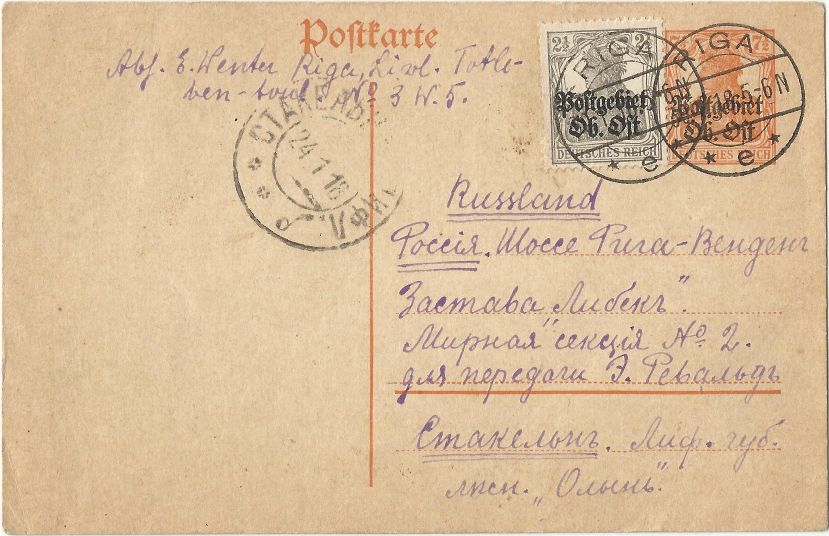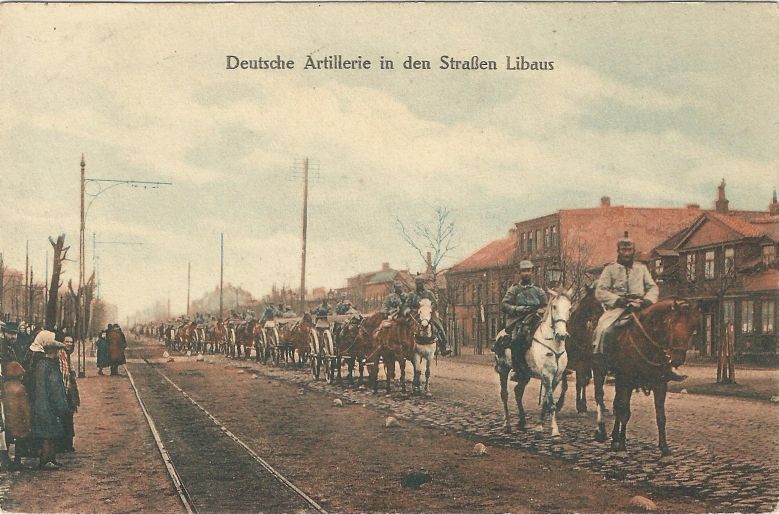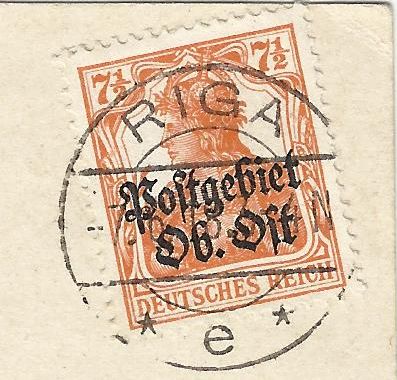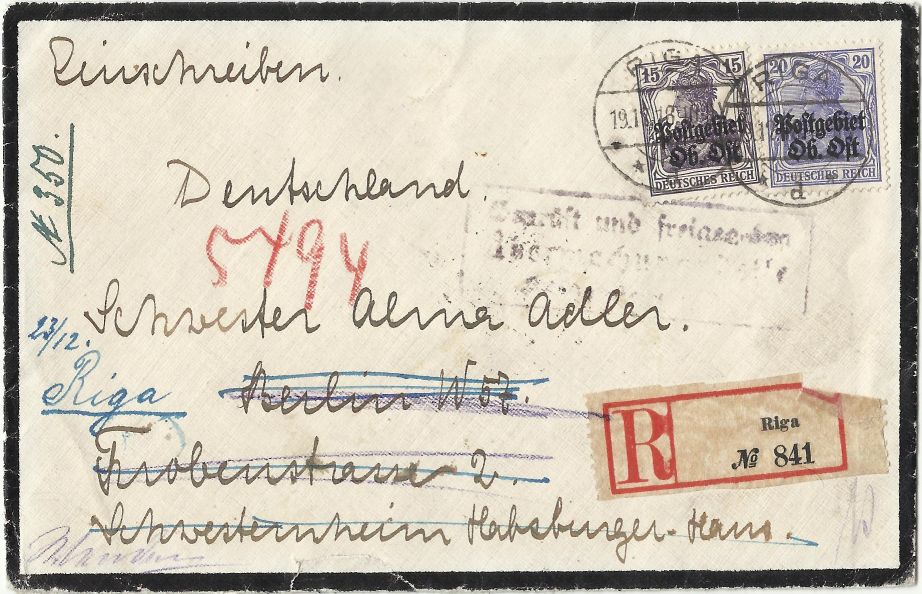Latvia
-
Courland, Semigallia, Latgale
-
Royal Swedish Post
-
Imperial Russian Post
-
German Occupation / Ob. Ost
From April 1915 onwards, German units gradually advanced from south to north along the Baltic coast.The port city of Libau (Liepāja) fell on May 8, 1915 and the Kurland capital Mitau (Jelgava) on August 1. In November, the River-Düna– (Daugava–) line was reached.
It was not until the beginning of September 1917 that German forces succeeded in crossing the Düna and Riga was taken. Meanwhile, in Russia, the Tsar had abdicated in March 1917 and a provisional government had been formed. In October 1917, the Bolsheviks took power, who prioritised the conclusion of peace with Germany.
On December 15, 1917, an armistice was concluded between the Central Powers and the Soviet government. After the non-extension of the armistice by the Soviet government, the German troops resumed their advance on February 19, 1918 and pushed further north.
The later Estonian-Latvian border town of Walk (Valga, Valk) was already reached on February 22, 1918, and large parts of what would later become Estonia were occupied by February 24. Thus the complete territory of the later Republic of Latvia was in German hands. Under this pressure, the Soviets signed the Brest-Litovsk Peace Treaty on March 3.
Postal area of the Oberbefehlshaber Ost (Commander-in-Chief East)
We know the administrative area of the Commander-in-Chief East of the German Army postally under the name "Postgebiet Ob. Ost". The advancing German troops initially only set up the German Field Post for use by German military personnel. Afterwards, so-called "Landespostämter" (regional post offices) were gradually established for the local civilian population, the first on January 15, 1916 in Kurland (Kurzeme), in Riga on October 22, 1917 and in the rest of Livonia on May 1, 1918.
While some German post offices in Courland were open for almost three years, the opening time of most Livonian post offices was limited to about seven and a half months.
For franking of postal items, a set of a total of 12 Germania stamps with overprint "Postgebiet Ob. Ost" were issued at the counters of the regional post offices.
All mail was subject to censorship. Letters and cards sent within the postal territory Ob. Ost (on the territory of the later Republic of Latvia) were sent to the postal control centres in Libau (Liepāja), Mitau (Jelgava), Riga or Wenden (Cēsis).

Postal stationery postcard from HASENPOTH (Aizpute) to LIBAU (Liepāja) with censorship cancel L in circle, post office surveillance Libau, 1918.
In the Armistice Treaty of Brest–Litovsk of December 15, 1917, the exchange of news, newspapers and postcards was agreed upon as well. This exchange through the fronts took place at traffic points marked by white flags, e.g. on the chaussee Riga–Wenden–Walk (Rigā–Cēsis–Valka). Due to the non-extension of the armistice, this provisional exchange of mail was first interrupted on February 18, 1918, and only resumed after the conclusion of the Brest-Litovsk peace treaty.
Two periods of postal exchange can be distinguished:
1st period: 17.12.1917–18.02.1918, among others via the Chaussee described above.
2nd period: 12.06.–12.11.1918 (sporadically later; denunciation in Brest–Litowsk by the Soviets on 23.11.1918)

Postcard from RIGA to STACKELN (later Staicele in Latvia) in Livonia Governorate, Russia ( January 18 –24). The card was handed over to the Russian postal service at the "Libek" transport point on the Riga – Wenden causeway, 1918.
With the conclusion of the peace treaty of Brest–Litowsk on 3.3.1918, the diplomatic exchange of mail between Germany and Russia was resumed; of course, no longer on the causeway described above, as the entire Baltic region was now under German occupation. Civil mail exchange for the local population via the Ob. Ost Landespostämter was only possible again from 12.06.1918.
The official last working day of the civilian German postal service on the territory of the now proclaimed Republic of Latvia was Friday, December 26, 1918. However, internal mail processing did not end on 26.12.1918 (see e.g. the following cover).
-
Independent Republic of Latvia
-
Soviet Occupation
-
German Occupation / Ostland / Courland
-
Camp Mail / Latvians in Exile
-
Independent Republic of Latvia (restored)
-
Private Mail in Latvia







